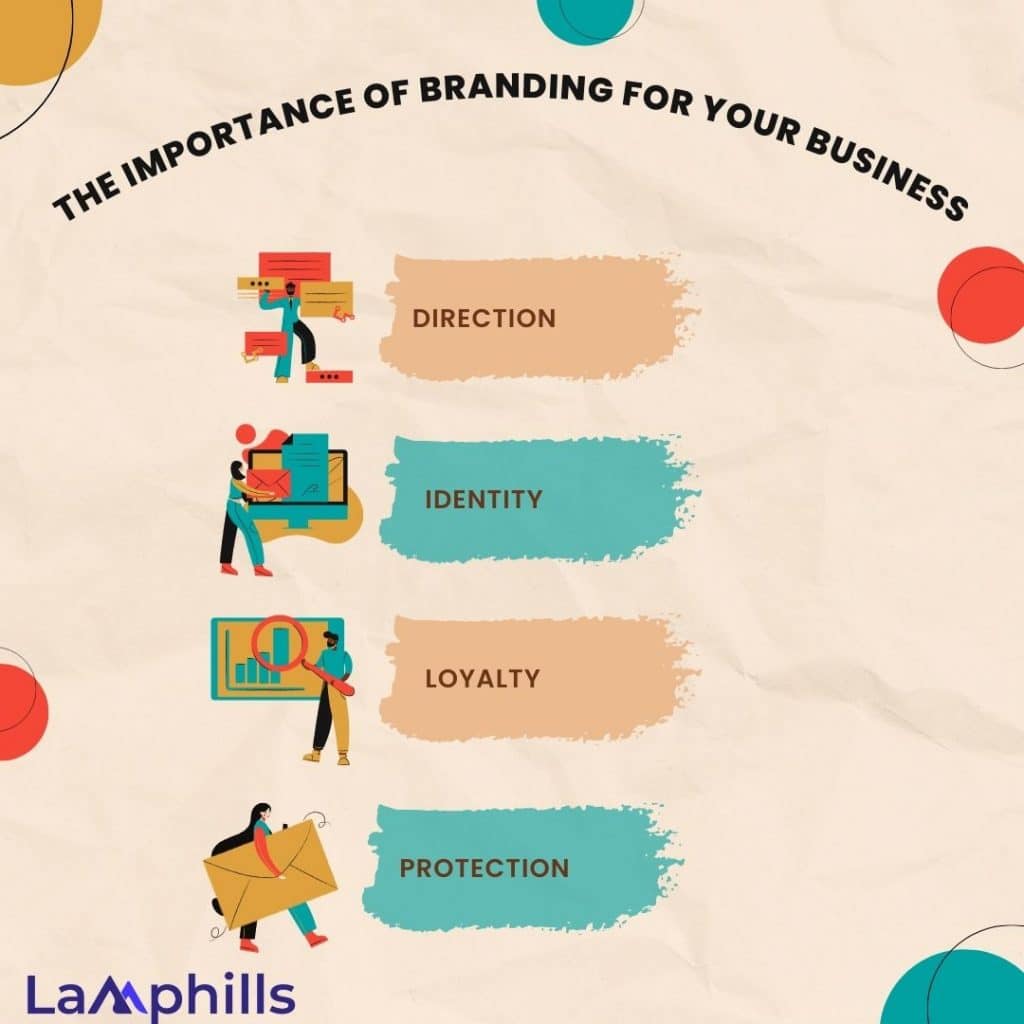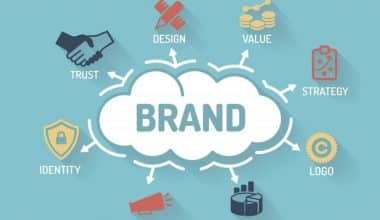As a Nigerian, I have always witnessed the terms branding vs. logo often get thrown around interchangeably, but they’re far from the same thing. Think of branding as the entire experience your business offers, from the way it looks to the way it communicates, while a logo is simply a visual shortcut that people use to recognize your brand. Understanding the difference between the two is crucial for building a strong, lasting identity that resonates with your audience. In this article, we’ll break down what branding vs. logos really are, how they differ, and why both are vital to your business success.
Key Points
- Branding is the process of creating a unique identity for a business, encompassing its values, messaging, and visual elements to differentiate it from competitors and build trust with customers.
- A logo is a visual representation of a brand, serving as a recognizable identifier that conveys the brand’s values and personality.
- Branding is a long-term strategy focused on creating an emotional connection with customers, while a logo is a short-term tactic used for immediate brand recognition.
- Effective branding requires consistency across all touchpoints, while a logo is just one element within the broader branding framework.
- Branding lays the foundation for a strong brand identity, and the logo visually represents and reinforces that identity.
What is Branding?
Branding is the process of creating a unique identity for a product, service, or company that differentiates it from others and creates a lasting impression on customers. It encompasses various elements, including the logo, color palette, typography, tone of voice, and messaging. Branding is about creating an emotional connection with customers, building trust, and establishing credibility. Effective branding increases brand recognition and customer loyalty and ultimately drives business growth.
Branding involves understanding your target audience, unique value proposition, and brand values. It requires consistency across all touchpoints, including visual identity, tone of voice, and messaging. A strong brand identity can help businesses establish trust, credibility, and recognition with customers.
What is a Logo?
A logo is a visual representation of a brand or company, often featuring a symbol, icon, or typography. It serves as a recognizable identifier for a business and can convey a company’s values, personality, and message. A well-designed logo is essential for brand recognition and can increase brand awareness, drive customer engagement, and create a lasting impression. A logo can be a wordmark, letterform, or icon-based design. It should be simple, memorable, and scalable for various applications. A logo is a critical element of branding and can make or break a business’s first impression.
Key Differences Between Branding vs Logo
Branding and logo design are often used interchangeably, but they have distinct differences. Branding is a broad concept that encompasses multiple elements, while a logo is a single visual element. Branding is about creating an emotional connection with customers, whereas a logo is a tangible representation of that connection. Branding is a long-term strategy, while a logo is a short-term tactic. Branding involves understanding your target audience, unique value proposition, and brand values, whereas a logo is a visual representation of those. values.
A logo can be changed, but a brand’s identity remains the same. Branding is about building trust, credibility, and recognition, whereas a logo is a symbol of that recognition. Branding encompasses various elements, including typography, color palette, and tone of voice. A logo is a critical element of branding, but it’s not the only element. Branding is a continuous process, whereas a logo is a one-time design. Branding requires consistent messaging across all touchpoints, whereas a logo is a static visual element. Branding is about creating an immersive experience, while a logo is a single visual cue.
Importance of Branding vs Positioning for Your Brand
Branding vs logo, though used interchangeably by many of us, has different importance they offer to your brand. Some of them include:
Importance of Branding

Branding is essential for businesses to establish trust, credibility, and recognition with customers. It differentiates a business from competitors and creates an identity that resonates with its target audience. Strong branding can increase business value, drive customer loyalty, and foster brand advocacy. Branding helps businesses communicate their unique value proposition and values. It creates an emotional connection with customers, building trust and loyalty. Branding is a critical element of marketing strategy, driving business growth and revenue.
Branding helps businesses establish a consistent tone of voice and messaging. It creates a sense of belonging among customers, fostering brand loyalty. Branding is a long-term investment, yielding benefits over time. Branding helps businesses adapt to changing market trends and customer needs. Branding enables businesses to expand into new markets and industries. Branding helps businesses build strategic partnerships and collaborations.
Importance of Logo
A logo is a critical element of branding, serving as a visual ambassador for a business. It can convey a company’s values, personality, and message, making it a tangible representation of the brand. A well-designed logo can increase brand awareness, drive customer engagement, and create a lasting impression. A logo can be used across various marketing materials, including business cards, websites, and social media. It should be simple, memorable, and scalable for various applications.
A logo can make or break a business’s first impression, making it essential for businesses to invest in a well-designed logo. A logo can be a wordmark, letterform, or icon-based design. It should be unique and distinctive, avoiding clichés and overused symbols. A logo can be used to communicate a company’s values, mission, and vision.
A logo can foster brand recognition and loyalty. A logo can be a powerful tool for brand differentiation. A logo can increase brand valuation and attractiveness to investors. A logo can be a critical element of brand storytelling. A logo can be used to create an emotional connection with customers.
Building a Strong Identity for Your Business
Building a strong brand identity requires a deep understanding of your target audience, unique value proposition, and brand values. It involves creating a consistent visual identity, tone of voice, and messaging across all touchpoints. A strong brand identity can help businesses establish trust, credibility, and recognition with customers. It can drive customer loyalty, advocacy, and retention.
A strong brand identity can differentiate a business from competitors and create a lasting impression. It can be used to communicate a company’s values, mission, and vision. Building a strong brand identity requires a long-term commitment to consistency and excellence.
It involves continuous monitoring and adaptation to changing market trends and customer needs. A strong brand identity can help businesses navigate crises and challenges. It can foster a sense of community and belonging among customers. A strong brand identity can drive business growth and revenue.
A strong brand identity can increase brand valuation and attractiveness to investors. It can help businesses attract and retain top talent. A strong brand identity can create a sense of pride among employees. It can foster a culture of innovation and creativity.
Logo or Branding: Which One Comes First?
Branding comes before logo design. A logo is a visual representation of a brand, and it’s essential to establish a brand’s identity, values, and messaging before designing a logo. A logo should reflect the brand’s personality, values, and message, making branding a crucial step before logo design. Branding involves understanding your target audience, unique value proposition, and brand values, whereas logo design is a creative process that requires a deep understanding of the brand’s identity.
Branding is a long-term strategy, whereas logo design is a short-term tactic. Branding encompasses various elements, including typography, color palette, and tone of voice, whereas logo design is a single visual element. Branding sets the foundation for logo design. Logo design is a manifestation of branding.
Branding guides logo design decisions. Logo design reinforces branding efforts. Branding and logo design are interconnected. A strong brand identity can inform logo design. Logo design can enhance brand recognition. Branding and logo design requires continuous iteration and improvement.
Where Do You Put Your Brand Name and Logo?
According to the Nielsen Norman Group’s study, left is the way to go because most people look immediately to the left-hand corner of a website for the logo. If you place it in the right-hand corner of your website, it might impact your visitor’s ability to remember your brand.
What Are the 5 C’s of Branding?
Clarity, consistency, content, connection, and confidence are all equally important pieces of the puzzle for building a successful personal brand. Focus on developing and mastering each of the five C’s, and your personal brand will surely help you accomplish your goals.
What Makes for a Good Logo?
Here are the key elements found in great logo design: Memorability: An iconic logo is easily remembered by consumers. Memorable logos offer a unique design, feeling, and message. Versatility: These logos adapt well across all platforms and sizes, maintaining their impact and legibility.
Conclusion
While your logo is the face of your business, branding is the heart and soul. It’s the difference between a company that’s easily forgotten and one that leaves a lasting impression. By investing in strong branding and a well-designed logo, you can build a business that not only stands out but also connects deeply with your customers. Remember, branding lays the foundation, and your logo brings it to life—together, they create an identity that drives growth and fosters loyalty.
Related Articles
- Branding vs Positioning: Understanding the Difference
- Branding vs Visual Identity: What Are They and Why Do They Matter for Your Brand?
- Branding vs Trademark: What Every Business Owner Needs to Know
- Branding vs. Advertising: Understanding the Difference






